It’s Mental Illness Awareness Week: annually NAMI, the National Alliance on Mental Illness, devotes the first week of October to advocate for people facing managing a mental illness every day and to raise public consciousness on the pervasiveness of mental illness in America.
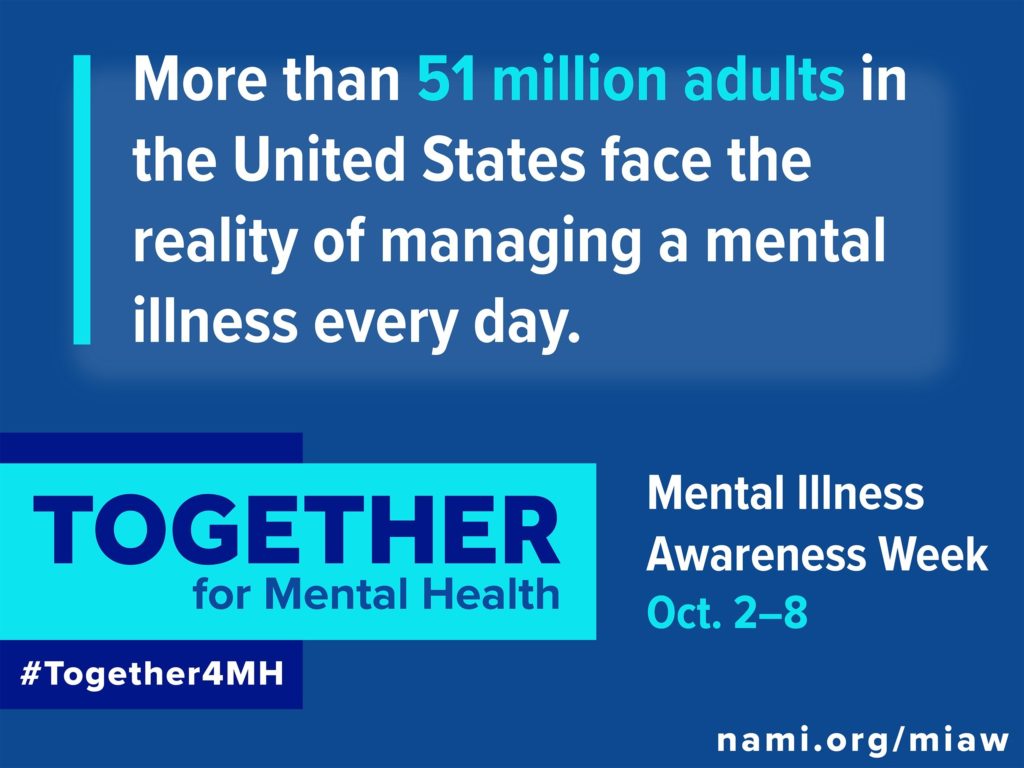
Mental Illness Awareness Week: Oct. 2-8, 2022
This year, NAMI’s key themes address the over-arching message of “What I wish I had known,” each day looking into:
- Monday Oct. 3: Stigma
- Tuesday Oct. 4: Medication [National Day of Prayer for Mental Illness Recovery and Understanding]
- Wednesday Oct. 5: Therapy
- Thursday Oct. 6: Disclosing [National Depression Screening Day], and,
- Friday Oct. 7: Caregiving.
To track the ongoing social conversation for MIAW, follow the hashtag #Together4MH on your favorite social media channel, whether Twitter, Instagram, Linkedin, or other platform.
For 2022’s campaign, here are some key data about mental illness in the U.S. that NAMI wants us to know:
- 1 in 5 U.S. adults experience mental illness each year
- 1 in 20 U.S. adults experience serious mental illness each year
- 1 in 6 U.S. youth aged 6-17 experience a mental health disorder each year….a growing concern.
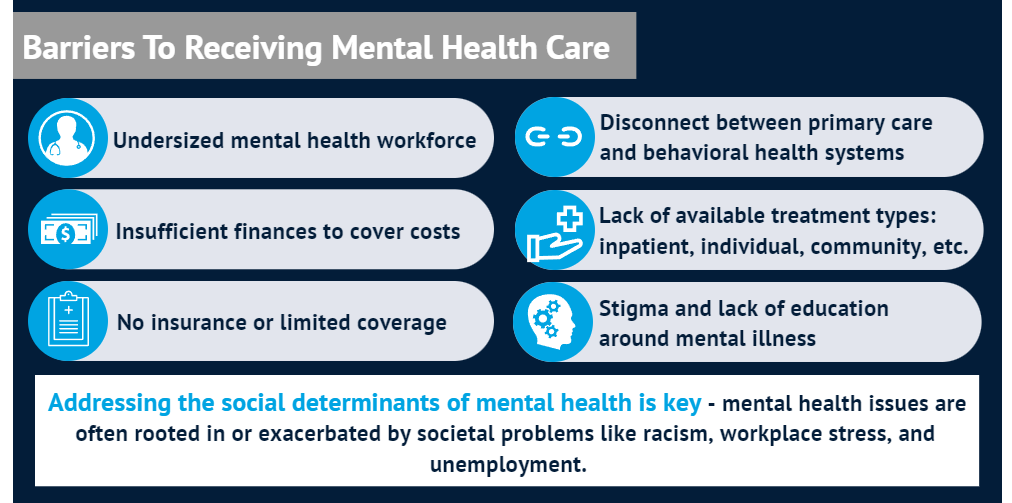
As I discussed in yesterday’s Health Populi blog on peoples’ growing use of connected health tools and apps, more Americans have adopted digital on-ramps for mental health — for therapy, for mindfulness and meditation, for anxiety and depression management, and for peer-to-peer support.
NAMI reminds us that in 2020, only 46% of U.S. adults, less than half of people with mental illness in America, received treatment.
There are many barriers to treatment, NIHCM explained in their report published in sync with Mental Illness Awareness Week this week. Some of those obstacles are shown in the chart here, noting a shortage of the mental health workforce, affordability for accessing services along with limited insurance coverage, and a disconnect between primary care and the mental/behavioral health system.
Those, and the ongoing stigma to reaching out for services — which can be partially alleviated through digital mental health connections.
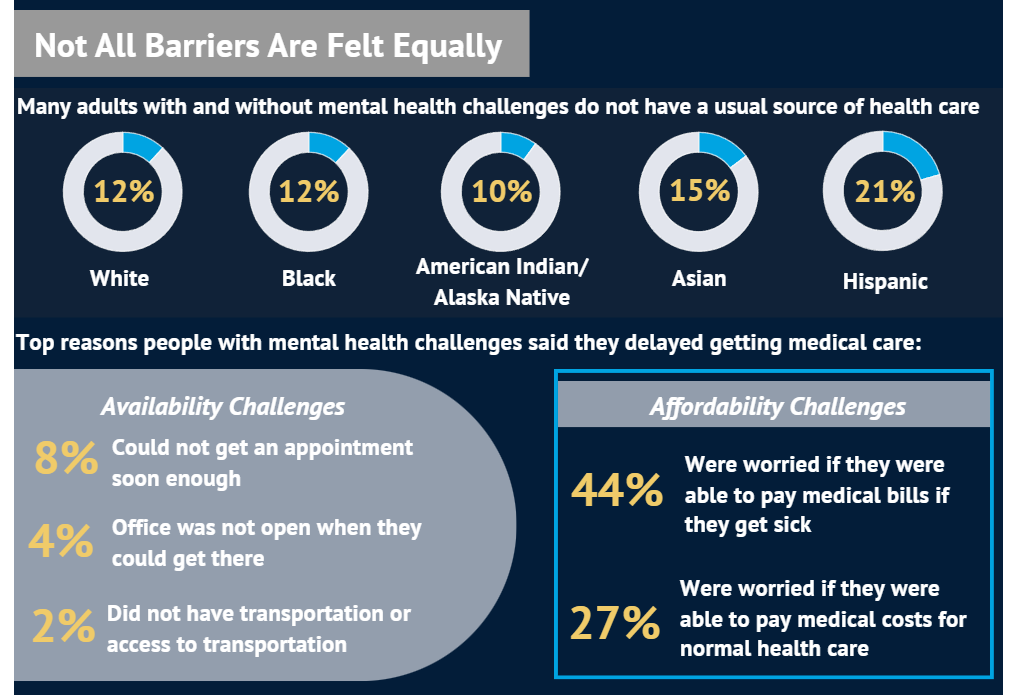
Sadly consistent with other aspects of the U.S. health system, there are health disparities with respect to access to care, articulated here in a chart from the NIHCM paper.
Access to a usual source of health care can help, but the lack of integration with primary care continues to be a challenge across the U.S. health system for patients across demographics.
Affordability and availability for in-person mental health services are also health-equity challenged often due to risks of social determinants of health factors like transportation, health insurance coverage, and job security which can allow working age people to get time away from work for care.
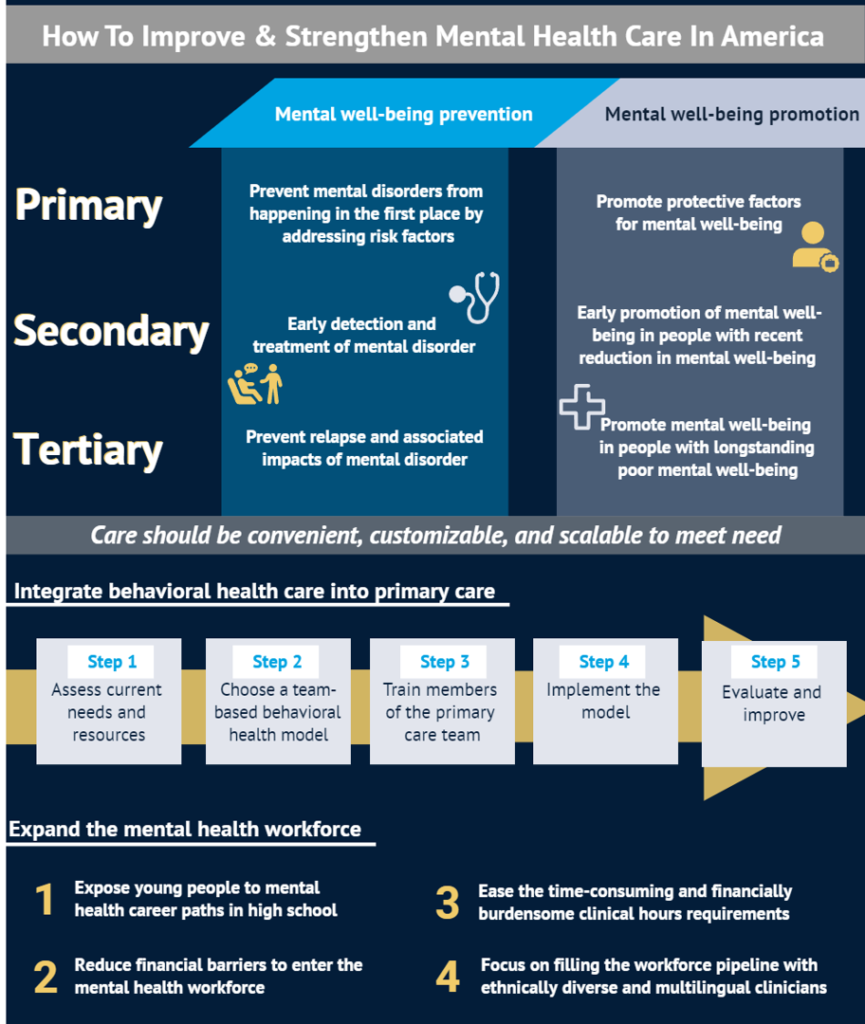
How to address these obstacles in a time of expanding need on the patient-demand side and very limited resources on the supply side?
This last chart from the NIHCM recommendations suggests making care “convenient, customizable, and scalable” to meet the needs of people, at the N of 1.
Key to scalability is to integrate behavioral health into primary care –requiring a huge shift in the way we look at mental health as, simply and profoundly, health. And, to finance mental health care embedded into a whole-health system for which Paul Wellstone and Pete Domenici advocated in 2008 via their Mental Health Parity Act.
Finally, we must expand the mental health workforce, starting with young people in school to inspire students to enter career paths serving well-being. To do so will also require additional finance in the form of incentivizing students to enter the mental health workforce.
Here are some additional, useful resources to support your own advocacy of mental well-being among your circle of friends, family and colleagues….
From the National Council for Mental Well-Being
From the World Federation for Mental Health and Clubhouse International
From Learning for Justice, especially focused on young peoples’ mental health and de-stigmatizing care among under-served people
Here’s NAMI’s video about What I wish people knew about anxiety that will move you, inspire you, educate you….people sharing their lived experiences…
You can see other videos about What I wish people knew about bipolar disorder and borderline personality disorder on the NAMI MIAW portal.


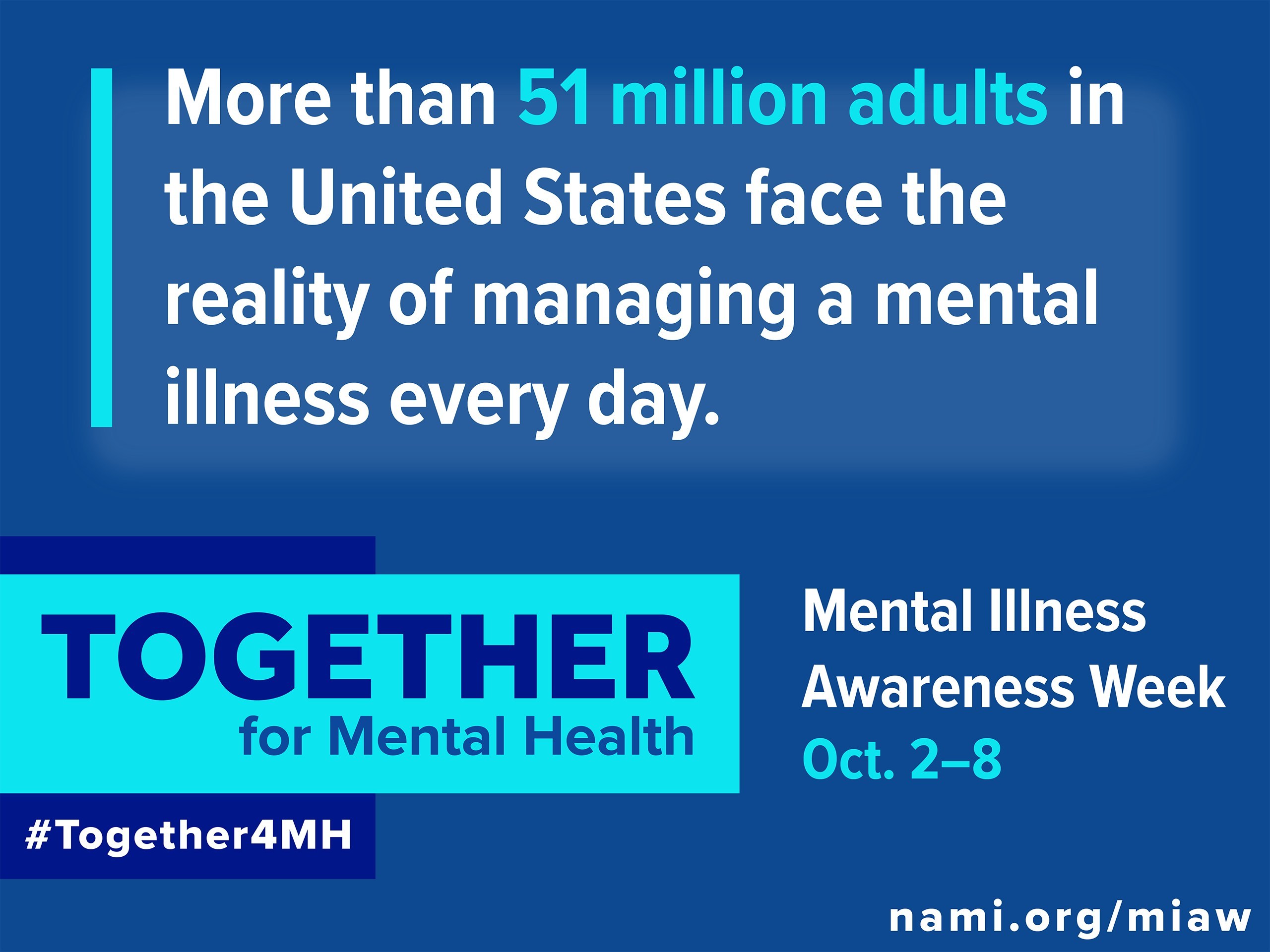


 Interviewed live on BNN Bloomberg (Canada) on the market for GLP-1 drugs for weight loss and their impact on both the health care system and consumer goods and services -- notably, food, nutrition, retail health, gyms, and other sectors.
Interviewed live on BNN Bloomberg (Canada) on the market for GLP-1 drugs for weight loss and their impact on both the health care system and consumer goods and services -- notably, food, nutrition, retail health, gyms, and other sectors. Thank you, Feedspot, for
Thank you, Feedspot, for  As you may know, I have been splitting work- and living-time between the U.S. and the E.U., most recently living in and working from Brussels. In the month of September 2024, I'll be splitting time between London and other parts of the U.K., and Italy where I'll be working with clients on consumer health, self-care and home care focused on food-as-medicine, digital health, business and scenario planning for the future...
As you may know, I have been splitting work- and living-time between the U.S. and the E.U., most recently living in and working from Brussels. In the month of September 2024, I'll be splitting time between London and other parts of the U.K., and Italy where I'll be working with clients on consumer health, self-care and home care focused on food-as-medicine, digital health, business and scenario planning for the future...